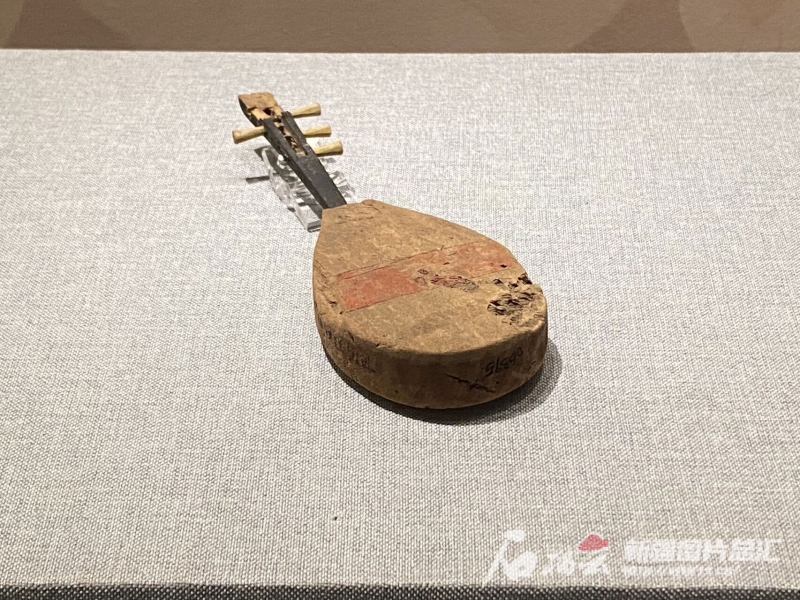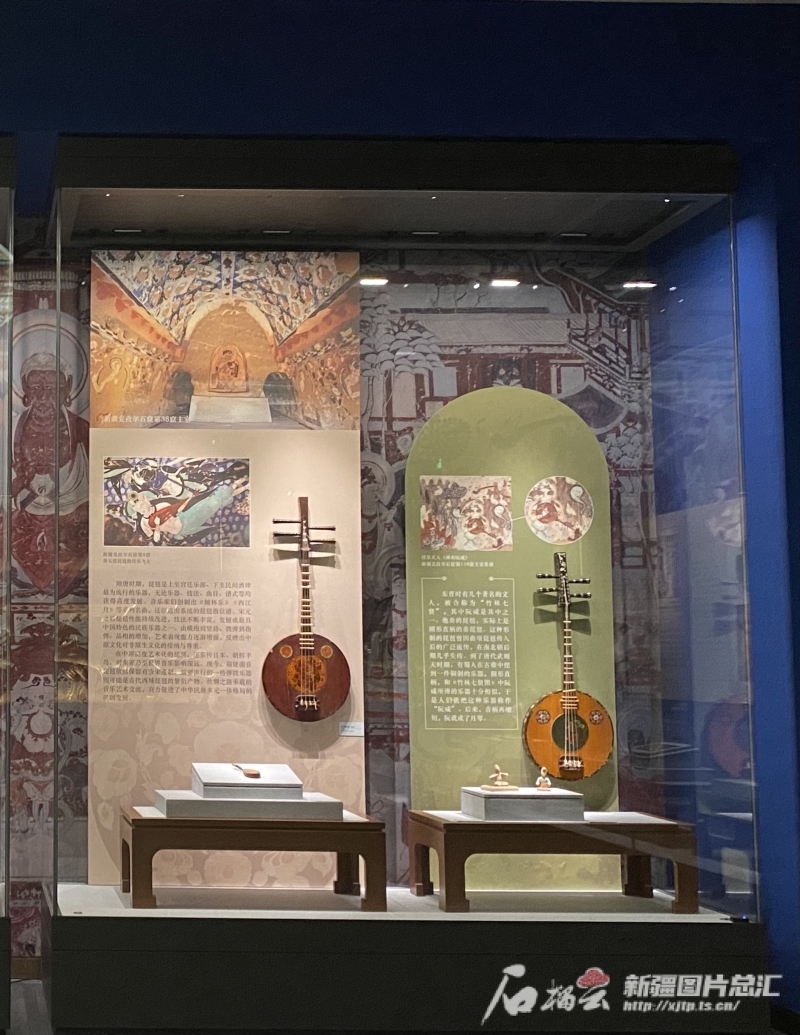Shiliuyun-Xinjiang Daily (Reporter Zhao Mei) news: In the "Silk Road Musical Instruments" exhibition on the third floor of the Xinjiang Museum, two pipa (Chinese lute) artifacts and multiple images of pipa relics demonstrate the instrument's dominant position in the musical instruments of the ancient Silk Road.
Pipa is known as the "king of plucked instruments." Adil Abliz, a researcher at the Xinjiang Museum, explains that ancient pipas were categorized into straight-necked pipas and crooked-neck pipas. The straight-necked pipa, also called the "Qin pipa," originated during China's Qin Dynasty. The curved-necked pipa, known as the "Hu pipa," was introduced to the Central Plains from the Western Regions during the Han Dynasty.
"While pipas are frequently mentioned in historical records, they are exceptionally rare in archaeological discoveries within China. Several physical pipa specimens unearthed in Turpan, Hotan, and Kuqa in Xinjiang have provided invaluable material evidence for studying China's pipa history and culture," he noted.

Photo shows a Tang Dynasty wooden pipa displayed in the "Silk Road Musical Instruments" exhibition at Xinjiang Museum in Urumqi City, northwest China's Xinjiang Uygur Autonomous Region. (Photo by Shiliuyun-Xinjiang Daily/ Zhao Mei)
The wooden pipa of the Tang Dynasty showcased in the exhibition hall was unearthed from the Astana Tombs in Turpan. It is composed of two remnants of funerary objects, standing 10 centimeters tall and carved from wood. The neck features four tuning pegs arranged with one on the left and three on the right, while the lower body forms a half-pear-shaped soundbox. The pipa’s head is decorated with black pigment, and the midsection is adorned with red pigment, exuding a simple yet elegant aesthetic.
Another exhibit, a kind of Sandalwood Pipa of Tang Dynasty (a replica), mirrors the original artifact housed in Shosoin, Japan. This piece, renowned for its fine craftsmanship and elaborate decorative patterns, is regarded as a prime example of the artistry and craftsmanship of the Tang Dynasty.

Photo shows a kind of Sandalwood Pipa of the Tang Dynasty (a replica) displayed in the "Silk Road Musical Instruments" exhibition at Xinjang Museum in Urumqi City, northwest China's Xinjiang Uygur Autonomous Region. (Photo by Shiliuyun-Xinjiang Daily/ Zhao Mei)
On the holographic projection of the Tang Dynasty Sumozhe reliquary box in the exhibition hall, four kalaviṅka (Buddhist celestial musicians) are depicted holding instruments. One carries a curved-necked pipa, while another holds an instrument resembling a five-stringed pipa.

Photo shows replicas of two ruanxians (a plucked string instrument) displayed in the "Silk Road Musical Instruments" exhibition at Xinjiang Museum in Urumqi City, northwest China's Xinjiang Uygur Autonomous Region. (Photo by Shiliuyun-Xinjiang Daily/ Zhao Mei)
The exhibition also features two Tang Dynasty ruanxian replicas, which resemble the pipa but have a circular soundbox. The originals of these artifacts are preserved in Shosoin, Japan. The ruanxian, derived from the Central Plains’ Qin pipa, gained its name during the Eastern Jin Dynasty when Ruan Xian, one of the "Seven Sages of the Bamboo Grove," mastered this round-bodied, straight-necked instrument. Later generations named it "ruanxian" in his honor.
During the Sui and Tang dynasties, the pipa became the most popular instrument, spanning imperial courts to rural taverns. This era saw unparalleled advancements in pipa design, performance techniques, musical repertoire, and notation systems. After the Song and Yuan dynasties, the pipa underwent continuous refinements, evolving into one of China's most iconic traditional instruments. Its artistry flourished in the Central Plains before spreading eastward to Japan and the Korean Peninsula, profoundly influencing East Asian and global music.
"Today, the Fujian Nanyin pipa still preserves the structural legacy of the Tang and Song dynasties, while plucked instruments popular in Xinjiang may also descend from ancient pipas of Western Regions. The pipa not only testifies to the fusion of musical arts along the Silk Road but also stands as a powerful symbol of the diverse yet unified Chinese civilization," said Adil Abliz.
(A written permission shall be obtained for reprinting, excerpting, copying and mirroring of the contents published on this website. Unauthorized aforementioned act shall be deemed an infringement, of which the actor shall be held accountable under the law.)









